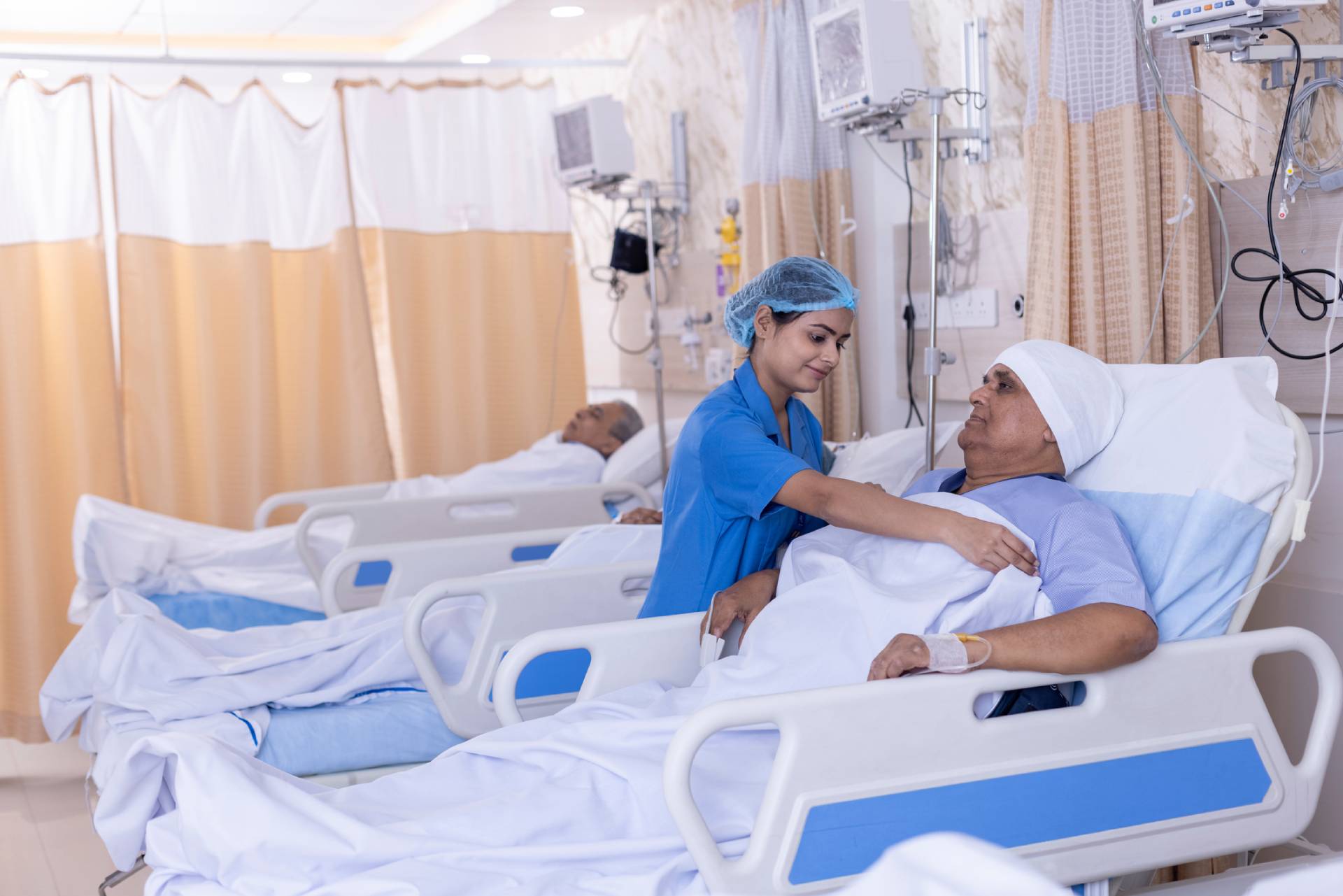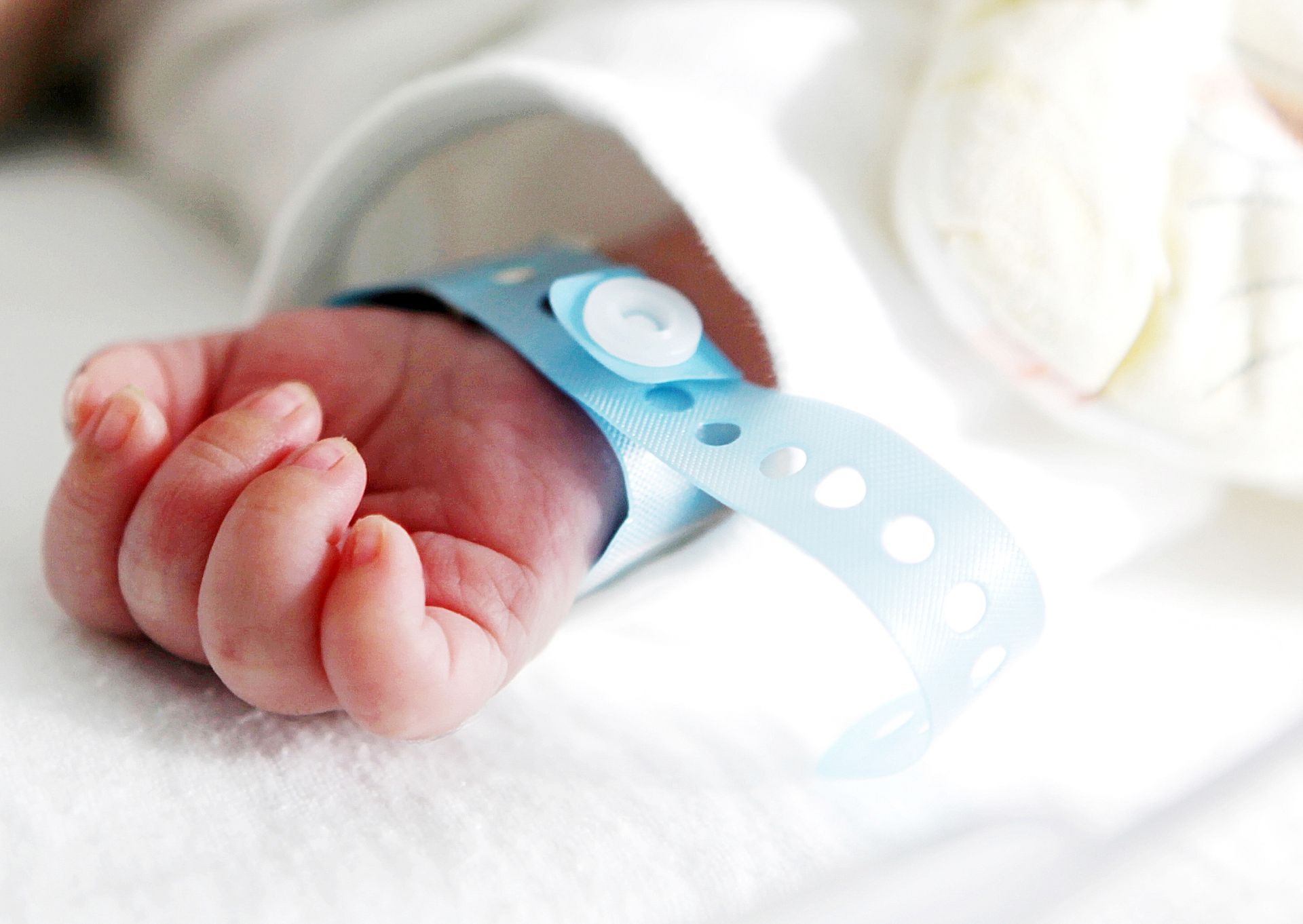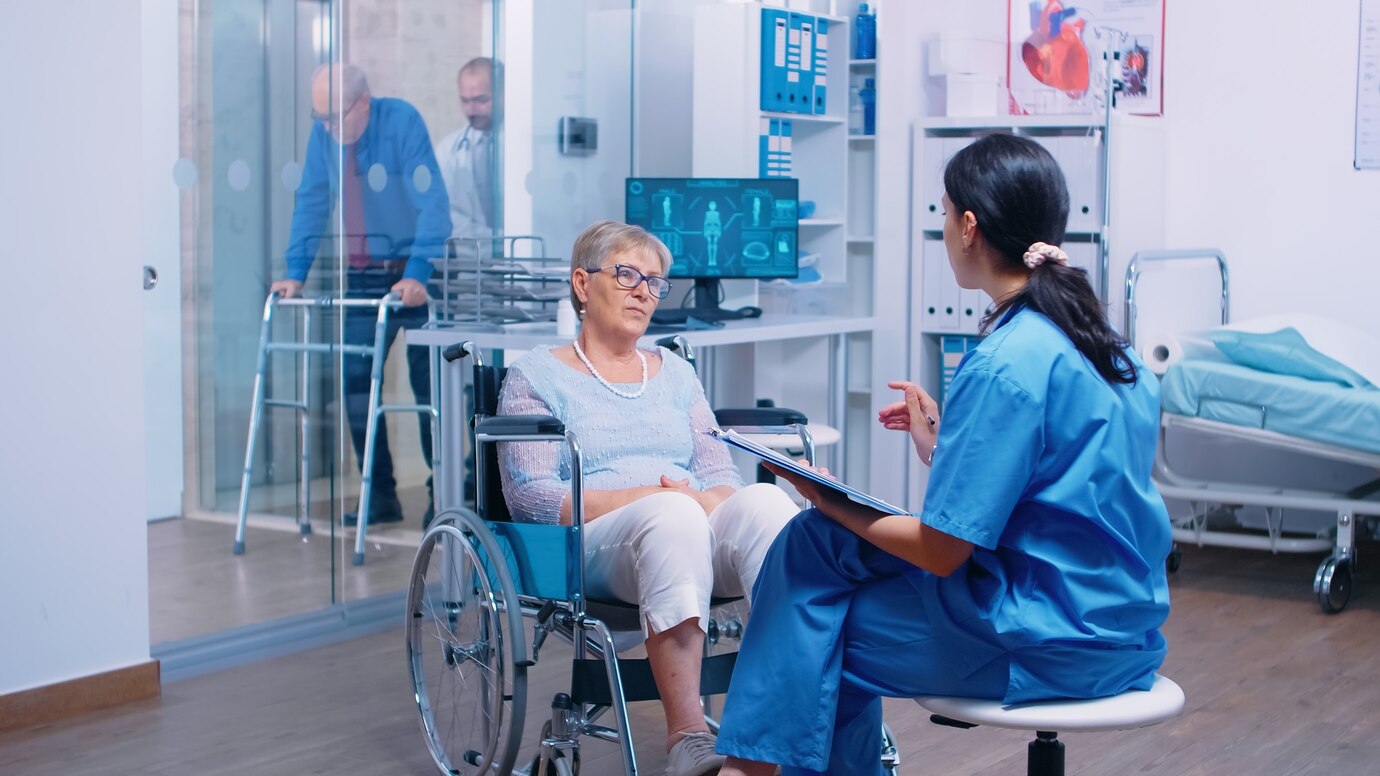
A Significant Health Issue
Pressure ulcers, also known as pressure injuries or bedsores, are a prevalent health concern. Pressure ulcers form due to prolonged pressure on a specific area of the skin, often from remaining in the same position for an extended time without relief. The severity can range from mild skin reddening to deep wounds affecting muscle and bone.
Pressure ulcers are frequently observed in high-risk individuals, such as the elderly, critically ill, and those who are bedridden or wheelchair bound. If untreated, pressure ulcers can result in serious complications, including infection, pain and discomfort, decreased mobility, and severe cases may lead to death. Managing pressure ulcers increases healthcare costs due to extended hospital stays and treatments, highlighting the importance of prevention in care facilities.
This blog examines pressure ulcer stages, five use cases, prevention strategies, and the importance of proactively managing and reporting pressure ulcer incidents.
Table of Contents
Pressure Ulcer Stages
Understanding the different stages of pressure ulcers is fundamental for effective prevention, early detection, appropriate treatment, and management of these wounds, ultimately improving outcomes for affected individuals and reducing the burden of pressure injuries on healthcare systems.
Pressure ulcers are staged to indicate the extent of tissue damage. There is also an unstageable category for ulcers where the full extent of tissue damage cannot be determined due to necrosis or eschar. The severity of the ulcer directs the appropriate treatment, which may involve relieving pressure on the affected area, keeping the wound clean and moist, managing pain, and addressing any underlying health issues contributing to ulcer formation.
The 4 stages of pressure ulcers are as follow:
- Stage 1: Non-blanch able erythematic – have not yet broken through the skin.
- Stage 2: Partial thickness – have a break in the top two layers of skin.
- Stage 3: Full thickness skin loss – affect the top two layers of skin, as well as fatty tissue.
- Stage 4: Full thickness tissue loss – deep wounds that may impact muscle, tendons, ligaments, and bone.
- Suspected Deep Pressure Injury.
- Unstageable Sores.
Healthcare professionals, particularly nurses and wound care specialists, play a significant role in the prevention, assessment, and treatment of pressure ulcers.
They may employ various techniques to manage pressure ulcers effectively and promote healing. Prevention is crucial in managing pressure ulcers, especially in individuals who are bedridden or have limited mobility.
Pressure Injury Use Cases: Impact and Prevention
Below, we explore five use cases of pressure injuries, their impact, and prevention methods.
| Use Cases | Impact | Prevention Methods |
|---|---|---|
| 1. Residents in Aged Care Facilities | Elderly individuals in care facilities often have limited mobility, making them prone to pressure ulcers. These injuries can cause pain, infections, and decreased quality of life. Untreated pressure ulcers may lead to severe complications like sepsis, which can be fatal. | • Reposition patients frequently to relieve pressure on vulnerable areas. • Use specialized mattresses or cushions designed to redistribute weight. • Conduct regular skin assessments by healthcare professionals. • Ensure adequate hydration and nutrition to promote skin integrity. |
| 2. Post-Surgical Patients | Post-surgery patients often face immobility due to pain or medical restrictions, leading to pressure ulcers that delay recovery and increase healthcare costs. | • Early mobilization post-surgery when medically possible. • Encourage patients to shift in bed to reduce pressure. • Monitor skin conditions during each nursing shift. • Apply barrier creams to prevent skin breakdown. |
| 3. Diabetes Patients | Diabetic individuals often suffer from peripheral neuropathy, which reduces sensation in extremities. This hinders their detection of early pressure ulcers, resulting in advanced, hard-to-treat wounds. | • Regular foot checks, as pressure ulcers often develop on heels in this group. • Use of padded footwear to reduce pressure during walking. • Strict management of blood sugar levels to encourage better healing. • Regular consultations with wound care specialists for prompt detection and management. |
| 4. Paralyzed Individuals | Paralyzed individuals, particularly those with spinal cord injuries, have a higher risk of pressure ulcers due to a lack of sensory feedback and the ability to shift body position. These ulcers can turn into chronic conditions needing long-term care and frequent hospital visits. | • Educate individuals on regular weight shifts, even in a wheelchair. • Design custom seating to reduce pressure on high-risk areas. • Implement a daily skincare routine with moisturizing and inspection. • Use pressure-relieving devices like gel cushions or air-fluidized beds. |
| 5. Obese Patients | Obesity raises the risk of pressure ulcers due to limited mobility and increased pressure on bones. Additionally, skin folds can retain moisture, increasing the chance of skin breakdown and infection. | • Use bariatric beds and equipment designed for larger body sizes. • Clean and dry skin folds regularly to prevent moisture. • Encourage movement or physical therapy within the individual’s abilities. • Monitor closely and intervene early for redness or soreness. |
Pressure Ulcer Prevention Strategies
The prevention of pressure ulcers is one of the key patient safety focuses in healthcare. This task is not solely the responsibility of nursing but requires multi-disciplinary collaborations, clear policies and protocols, and a culture that promotes safety.
Risk assessment is at the center of good clinical practice. It is an essential first step to identify individuals who are more likely to develop pressure ulcers. Other interventions include reducing pressure and friction on the skin through repositioning and encouraging regular movement, as well as maintaining good skin health. Educating caregivers and patients about the importance of pressure ulcer prevention is also an effective strategy.
Based on the National Pressure Injury Advisory Panel’s “Pressure Injury Prevention Points”, we have listed below 5 broad strategies and selected prevention points:
- Risk Assessment
Conducting a risk assessment to identify patients who are more likely to develop pressure ulcers should be the starting point. The earlier a risk is identified, the more quickly it can be addressed.
- Use a structured risk assessment tool, such as the Braden Scale, to identify individuals at risk for pressure injury as soon as possible (within 8 hours after admission)
- Refine the assessment by identifying additional risk factors such as the history of pressure ulcers and existing pressure injuries.
- Repeat the assessment at regular intervals and with any change in condition.
- Develop a care plan based on the areas of risk.
- Skin Care
Monitoring skin condition and maintaining skin hygiene is important for preventing pressure sores and identifying Stage 1 sores early so they can be treated before they worsen.- Inspect the skin upon admission and at least daily for signs of pressure injury.
- Assess pressure points and the skin beneath medical devices.
- Cleanse the skin promptly after episodes of incontinence. Use skin cleansers and skin moisturizers daily on dry skin.
- Avoid positioning an individual on an area of pressure injury.
- Nutrition
Consider hospitalized individuals to be at risk for undernutrition and malnutrition from their illness.- Use a valid tool to determine the risk of malnutrition.
- Refer all individuals at risk to a registered dietitian/nutritionist.
- Encourage at-risk individuals to have adequate fluids and a balanced diet.
- Provide nutritional supplements if required.
- Repositioning and Mobilization
Prevent prolonged pressure on specific parts of the body. Immobility is a main factor in causing pressure injuries.- Turn and reposition all at-risk individuals, if not contraindicated due to medical conditions.
- Choose a frequency for turning and repositioning the patient.
- Use appropriate padding and positioning devices.
- Consider the level of immobility, body size, and weight when choosing a support surface.
- Training and Patient Engagement
Educate and train caregivers about the importance of pressure ulcer prevention, including proper positioning techniques, skin care practices, and the use of assistive devices.
- Educate the individual and family about the risk of pressure injury.
- Engage individuals and families in risk-reduction interventions.
- Report and monitor pressure ulcer incidents and take preventive actions.
Preventive strategies, early detection, and appropriate management are crucial in reducing the incidence and severity of pressure ulcers and improving patient outcomes.
Reporting Pressure Ulcer Incidents
Pressure ulcer incident reporting is a crucial aspect of patient safety and quality management, particularly in settings where patients may be at risk of developing pressure ulcers, such as hospitals, nursing homes, and long-term care facilities.
Healthcare facilities typically have protocols for incident reporting, which may involve paper-based incident forms or online systems. When a pressure ulcer is discovered, it should be reported according to these protocols. The report should include details of the ulcer, circumstances surrounding its development, and any actions taken in response. Stage 3 and 4 pressure ulcers are patient safety events that could be a sentinel event.
Incident reporting data for pressure ulcers can provide actionable insights for initiating quality improvement plans. By analysing trends in pressure ulcer incidents, healthcare providers can identify opportunities to enhance preventive measures, staff education, and overall patient care practices.
Relevant Incident Details
Here is an outline of the relevant questions when reporting pressure ulcer incidents and why this information is important.
| Questions | Rationale/Remark |
|---|---|
| 1. Brief description of the incident occurred | Including the most advanced stage of the pressure ulcer and any immediate action taken to make the situation safe. |
| 2. Indicate the location of the ulcer | To aid in the statistic and further analysis. Common sites include the sacrum, heels, hips, ankles, elbows, and shoulder blades. |
| 3. Was there any documentation done about the patient skin inspection upon admission to this facility? | This is to ensure patient skin has been assessed upon arrival to the facility and that appropriate steps have been taken according to the policy/practice to address the issue of pressure sore. Also, this helps to identify if the ulcer existed earlier on the patient. If there is no documentation, further step is to understand why it was not done. |
| 4. Was there risk assessment conducted? | i. Risk Assessment Tools. Pressure ulcer risk assessment tools are used to identify patients who are at risk of developing pressure ulcers. These tools help to assess various factors that contribute to pressure ulcer development and include a scoring system to predict pressure ulcer risk. The commonly used pressure ulcer risk assessment tools are the Braden Scale, the Norton Scale, and the Waterlow Scale. Braden Q Scale is used for children. ii. Further Clinical Assessment. However, do not rely on the risk scores alone. Even patients with a low-risk score may need intervention. Instead, care givers should conduct further clinical assessments including looking at the patient’s pressure ulcer history, assessing co-morbidities and medications, and looking and touching the skin. Skin temperature may predict pressure ulcer risk. Some healthcare settings may not be using any risk assessment tools. As such, they may use the traditional method to assess patient’s skin condition. |
| 5. As a result of the assessment, was the patient documented to be at increased risk of pressure ulcer? | If yes, appropriate measure should be included in patient’s care plan. Absent of this step could have been contribute to increased factor of the ulcer development. |
| 6. What was the preventive intervention implemented? | By indicating the intervention, the healthcare personnel can brainstorm if there is any other intervention required apart from the ‘usual’ steps taken. Else, they may need to relook into the preventive actions. |
| 7. During the patient’s stay at this facility, did the patient develop a secondary morbidity (e.g., osteomyelitis, sepsis, tunnelling, or fissure)? Was the secondary morbidity attributed to the presence of the pressure ulcer? | The reason of such probing question helps the organization to address if there is any alarming situation happening so that it can be resolved immediately and avoid any potential legal issues. |
Implementing Plan of Care
After reporting the incident, appropriate measures should be taken to address the pressure ulcer and prevent further complications. This may include implementing a treatment plan, such as wound care interventions, repositioning schedules, pressure-relieving devices, and nutritional support. Additionally, the patient’s condition should be closely monitored to track the ulcer’s progress and ensure that it heals effectively.
Conclusion
Pressure ulcers are preventable through education, early intervention, and the use of specialized equipment. Tailored strategies that consider the unique needs of different patient groups can significantly improve outcomes and elevate the quality of care. Additionally, proactive and timely reporting of pressure ulcer incidents is essential for identifying the root causes, implementing preventive measures, and minimizing the likelihood of future incidents.
Free Download: QUASR Pressure Ulcer Incident Form
QUASR is a cloud-based healthcare incident reporting system. It offers functionalities that encourage Patient Identification Error reporting, facilitate collaboration, enable analysis, and track actions.
Click the link below to download!






